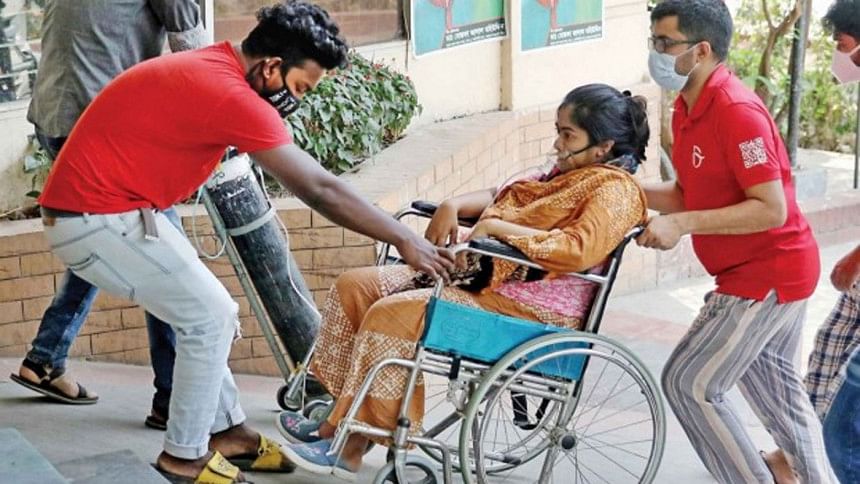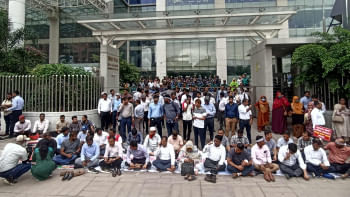Covid-19 preparedness: Is an Emergency Response System in place?

Uncountable numbers of people in India are suffering the painful and deadly consequences of a second wave of Covid-19 infections. The images in the media are heart-wrenching. It appears that the health system in India had become complacent and did not anticipate the devastation that the lurking virus could inflict, surreptitiously at the beginning, while multiplying with the mathematics of exponents. More recently, Nepal has been placed on call. A lack of preparedness can be devastating there as well.
The global response to the Covid-19 catastrophe to aid the afflicted countries (India, Brazil and other hotspots) has been rather poor. Responses from within each afflicted country are beginning to emerge, with volunteers doing a remarkable job with limited resources. It is imperative for key UN/global agencies, set up to battle major health crises, to step up with a global taskforce and coordinate their plans with local operations. Much as we would like to think otherwise, this is a global calamity—it must be fought decisively with global coordination and resolve. Otherwise, the menace will continue to circle the world with more deadly variants.
While such coordinated effort may (or may not) come, countries neighbouring the hotspots must continue to observe and learn, in anticipation, from the experiences of the afflicted countries and adopt best practices if they are to stymie the devastation the virus can cause.
In Bangladesh, while the numbers of the afflicted (not always fully authenticated) are lower than in India, complacency can be costly not just in human lives lost, but with regard to other economic, social and environmental consequences. The country must prepare an emergency response system (ERS) with urgency if it has not already done so. Personally, I have not seen much by way of preparation (but I could be wrong).
As a basis for preparation, I outline what needs to be done to deal with a stealth Covid-19 attack and propose a 10-step ERS that requires ramping up—immediately. The critical elements are broadly placed for subsequent elaboration and fine-tuning by the authorities, vested with the responsibility of battling this nemesis, to prepare a coordinated defense.
The proposed steps to be activated, especially for urban population centres with high population densities and where hotspots can develop in the blink of an eye, are as follows.
The first order of business is to establish a command-and-control centre (CCC) to gather data, monitor outbreaks, and organise for possible outbreaks in different urban areas. The CCC must serve as the brain of the ERS, assessing, coordinating, deploying and measuring the results—continuously. The armed forces are probably the best equipped and most disciplined organisation to carry out this coordination task. However, the CCC must include other relevant experts, public servants, health personnel, law enforcement agencies, etc., to form a network of expertise to draw upon as needed. The CCC must come together and start working now to address the following.
Oxygen supply and inventories must be expanded rapidly as soon as possible and placed in strategic locations for quick access and distribution. A small taskforce ought to be assigned to work out the constraints and logistics. Industry may be required to give up a part of their oxygen quota.
Hospitals are falling short of staff. This makes it impossible to handle caseloads. It is imperative that paramedics be trained in large numbers to provide the medical attention that is now being shouldered mostly by family members (as seen in India). In Bangladesh, the Directorate General of Health Services can work with selected hospitals to start up a training programme in short order in which health professionals will specify the three to five most needed skills that should be imparted to prepare the paramedic force.
Crowding in the hospitals must not be allowed. A chaotic and messy environment (seen in other developing countries) can be very disruptive for service provision. In fact, it is also important to use (social) media to prepare the public on how to work in tandem with health service providers to facilitate their own treatment. Patients themselves have a significant role to play in enhancing the quality of care they need and can avail.
Spaces/facilities must be earmarked/created to provide patient care if the Covid-19 tsunami strikes. It will likely overwhelm present hospital capacity. Sports complexes, parks, playgrounds, parade grounds, hotels and warehouses are all possible venues that must be easily convertible for potential large influxes of cases. Sanitisation plans for these facilities with adequate support personnel must be contemplated in advance and a phased approach be ready on paper. These care centres must be readily accessible and the public notified of their location.
Small vehicles must be made ready and equipped with oxygen and other basic needs to transport patients quickly to the nearest care centre. These vehicles (each assigned a number and a cell phone) must be brought under the CCC to be directed for patient pick up. An Uber model would be useful here and universities with Computer Science and Engineering departments could begin to develop an app for this right away that must be simple to operate. The CCC will coordinate all deployments.
Check-in/check-out procedures must be established and handled by a para-management (students, volunteers) taskforce (not medical personnel). The process of checking in/out must be made as simple and efficient as possible with minimal paperwork. Patients cannot wait 10+ hours to be provided the access they need. Another app would be useful here.
Law enforcement personnel must be stationed at the care facilities in sufficient numbers to enable health workers to do their job instead of attending to distractions (such as crowd control, traffic control, checking in, etc.).
Plans must be in place to handle the deceased. How will the last rites be performed, where, and by whom must also be planned by another taskforce and delivered smoothly.
Financial resources will be needed to support many of the above tasks. Funds may come from patients, government, private businesses (as part of their corporate social responsibilities), as well as international donations. Banking industry experts ought to be mobilised to come up with a plan to receive, disburse and track the money raised on an ongoing basis. A separate taskforce needs to be in place to handle this important function.
Time is of essence. There must be a state of readiness, whether the virus arrives in a new avatar or not. The leaders must not be complacent, given the sudden and virulent behaviour of this invisible enemy. It is also important to remember the words of experts—more pandemics are on their way, whether we like it or not. Emergency preparedness is an absolute necessity, not an option. It is time to be proactive, not reactive. It is time to act now.
Professor Syed Saad Andaleeb, PhD is Distinguished Visiting Professor at Institute of Business Administration (IBA), University of Dhaka, Bangladesh.

 For all latest news, follow The Daily Star's Google News channel.
For all latest news, follow The Daily Star's Google News channel. 



Comments